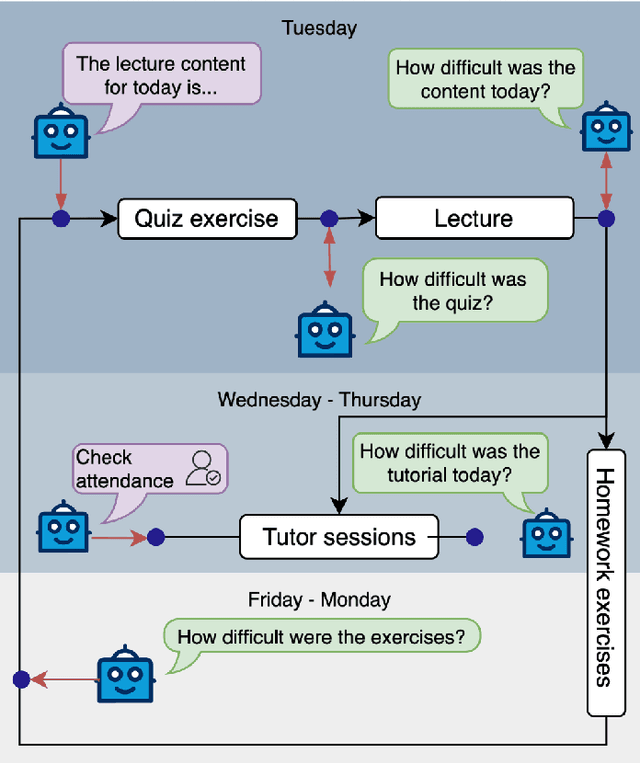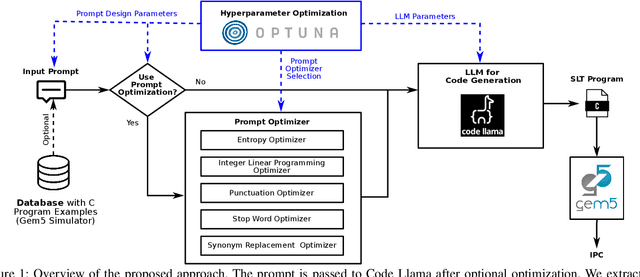Stefan Wagner
iTrace: Click-Based Gaze Visualization on the Apple Vision Pro
Aug 17, 2025Abstract:The Apple Vision Pro is equipped with accurate eye-tracking capabilities, yet the privacy restrictions on the device prevent direct access to continuous user gaze data. This study introduces iTrace, a novel application that overcomes these limitations through click-based gaze extraction techniques, including manual methods like a pinch gesture, and automatic approaches utilizing dwell control or a gaming controller. We developed a system with a client-server architecture that captures the gaze coordinates and transforms them into dynamic heatmaps for video and spatial eye tracking. The system can generate individual and averaged heatmaps, enabling analysis of personal and collective attention patterns. To demonstrate its effectiveness and evaluate the usability and performance, a study was conducted with two groups of 10 participants, each testing different clicking methods. The 8BitDo controller achieved higher average data collection rates at 14.22 clicks/s compared to 0.45 clicks/s with dwell control, enabling significantly denser heatmap visualizations. The resulting heatmaps reveal distinct attention patterns, including concentrated focus in lecture videos and broader scanning during problem-solving tasks. By allowing dynamic attention visualization while maintaining a high gaze precision of 91 %, iTrace demonstrates strong potential for a wide range of applications in educational content engagement, environmental design evaluation, marketing analysis, and clinical cognitive assessment. Despite the current gaze data restrictions on the Apple Vision Pro, we encourage developers to use iTrace only in research settings.
How LLMs are Shaping the Future of Virtual Reality
Aug 01, 2025Abstract:The integration of Large Language Models (LLMs) into Virtual Reality (VR) games marks a paradigm shift in the design of immersive, adaptive, and intelligent digital experiences. This paper presents a comprehensive review of recent research at the intersection of LLMs and VR, examining how these models are transforming narrative generation, non-player character (NPC) interactions, accessibility, personalization, and game mastering. Drawing from an analysis of 62 peer reviewed studies published between 2018 and 2025, we identify key application domains ranging from emotionally intelligent NPCs and procedurally generated storytelling to AI-driven adaptive systems and inclusive gameplay interfaces. We also address the major challenges facing this convergence, including real-time performance constraints, memory limitations, ethical risks, and scalability barriers. Our findings highlight that while LLMs significantly enhance realism, creativity, and user engagement in VR environments, their effective deployment requires robust design strategies that integrate multimodal interaction, hybrid AI architectures, and ethical safeguards. The paper concludes by outlining future research directions in multimodal AI, affective computing, reinforcement learning, and open-source development, aiming to guide the responsible advancement of intelligent and inclusive VR systems.
From Coders to Critics: Empowering Students through Peer Assessment in the Age of AI Copilots
May 28, 2025Abstract:The rapid adoption of AI powered coding assistants like ChatGPT and other coding copilots is transforming programming education, raising questions about assessment practices, academic integrity, and skill development. As educators seek alternatives to traditional grading methods susceptible to AI enabled plagiarism, structured peer assessment could be a promising strategy. This paper presents an empirical study of a rubric based, anonymized peer review process implemented in a large introductory programming course. Students evaluated each other's final projects (2D game), and their assessments were compared to instructor grades using correlation, mean absolute error, and root mean square error (RMSE). Additionally, reflective surveys from 47 teams captured student perceptions of fairness, grading behavior, and preferences regarding grade aggregation. Results show that peer review can approximate instructor evaluation with moderate accuracy and foster student engagement, evaluative thinking, and interest in providing good feedback to their peers. We discuss these findings for designing scalable, trustworthy peer assessment systems to face the age of AI assisted coding.
Supporting Preschool Emotional Development with AI-Powered Robots
May 24, 2025Abstract:This study evaluates the integration of AI-powered robots in early childhood education, focusing on their impact on emotional self-regulation, engagement, and collaborative skills. A ten-week experimental design involving two groups of children assessed the robot's effectiveness through progress assessments, parental surveys, and teacher feedback. Results demonstrated that early exposure to the robot significantly enhanced emotional recognition, while sustained interaction further improved collaborative and social engagement. Parental and teacher feedback highlighted high acceptance levels, emphasizing the robot's ease of integration and positive influence on classroom dynamics. This research underscores the transformative potential of AI and robotics in education. The findings advocate for the broader adoption of AI-powered interventions, carefully examining equitable access, ethical considerations, and sustainable implementation. This work sets a foundation for exploring long-term impacts and expanding applications of AI in inclusive and impactful educational settings.
ReqBrain: Task-Specific Instruction Tuning of LLMs for AI-Assisted Requirements Generation
May 23, 2025Abstract:Requirements elicitation and specification remains a labor-intensive, manual process prone to inconsistencies and gaps, presenting a significant challenge in modern software engineering. Emerging studies underscore the potential of employing large language models (LLMs) for automated requirements generation to support requirements elicitation and specification; however, it remains unclear how to implement this effectively. In this work, we introduce ReqBrain, an Al-assisted tool that employs a fine-tuned LLM to generate authentic and adequate software requirements. Software engineers can engage with ReqBrain through chat-based sessions to automatically generate software requirements and categorize them by type. We curated a high-quality dataset of ISO 29148-compliant requirements and fine-tuned five 7B-parameter LLMs to determine the most effective base model for ReqBrain. The top-performing model, Zephyr-7b-beta, achieved 89.30\% Fl using the BERT score and a FRUGAL score of 91.20 in generating authentic and adequate requirements. Human evaluations further confirmed ReqBrain's effectiveness in generating requirements. Our findings suggest that generative Al, when fine-tuned, has the potential to improve requirements elicitation and specification, paving the way for future extensions into areas such as defect identification, test case generation, and agile user story creation.
How Mature is Requirements Engineering for AI-based Systems? A Systematic Mapping Study on Practices, Challenges, and Future Research Directions
Sep 11, 2024Abstract:Artificial intelligence (AI) permeates all fields of life, which resulted in new challenges in requirements engineering for artificial intelligence (RE4AI), e.g., the difficulty in specifying and validating requirements for AI or considering new quality requirements due to emerging ethical implications. It is currently unclear if existing RE methods are sufficient or if new ones are needed to address these challenges. Therefore, our goal is to provide a comprehensive overview of RE4AI to researchers and practitioners. What has been achieved so far, i.e., what practices are available, and what research gaps and challenges still need to be addressed? To achieve this, we conducted a systematic mapping study combining query string search and extensive snowballing. The extracted data was aggregated, and results were synthesized using thematic analysis. Our selection process led to the inclusion of 126 primary studies. Existing RE4AI research focuses mainly on requirements analysis and elicitation, with most practices applied in these areas. Furthermore, we identified requirements specification, explainability, and the gap between machine learning engineers and end-users as the most prevalent challenges, along with a few others. Additionally, we proposed seven potential research directions to address these challenges. Practitioners can use our results to identify and select suitable RE methods for working on their AI-based systems, while researchers can build on the identified gaps and research directions to push the field forward.
Interactive Learning in Computer Science Education Supported by a Discord Chatbot
Jul 27, 2024



Abstract:Enhancing interaction and feedback collection in a first-semester computer science course poses a significant challenge due to students' diverse needs and engagement levels. To address this issue, we created and integrated a command-based chatbot on the course communication server on Discord. The DiscordBot enables students to provide feedback on course activities through short surveys, such as exercises, quizzes, and lectures, facilitating stress-free communication with instructors. It also supports attendance tracking and introduces lectures before they start. The research demonstrates the effectiveness of the DiscordBot as a communication tool. The ongoing feedback allowed course instructors to dynamically adjust and improve the difficulty level of upcoming activities and promote discussion in subsequent tutor sessions. The data collected reveal that students can accurately perceive the activities' difficulty and expected results, providing insights not possible through traditional end-of-semester surveys. Students reported that interaction with the DiscordBot was easy and expressed a desire to continue using it in future semesters. This responsive approach ensures the course meets the evolving needs of students, thereby enhancing their overall learning experience.
Large Language Models to Generate System-Level Test Programs Targeting Non-functional Properties
Mar 19, 2024
Abstract:System-Level Test (SLT) has been a part of the test flow for integrated circuits for over a decade and still gains importance. However, no systematic approaches exist for test program generation, especially targeting non-functional properties of the Device under Test (DUT). Currently, test engineers manually compose test suites from off-the-shelf software, approximating the end-user environment of the DUT. This is a challenging and tedious task that does not guarantee sufficient control over non-functional properties. This paper proposes Large Language Models (LLMs) to generate test programs. We take a first glance at how pre-trained LLMs perform in test program generation to optimize non-functional properties of the DUT. Therefore, we write a prompt to generate C code snippets that maximize the instructions per cycle of a super-scalar, out-of-order architecture in simulation. Additionally, we apply prompt and hyperparameter optimization to achieve the best possible results without further training.
From Requirements to Architecture: An AI-Based Journey to Semi-Automatically Generate Software Architectures
Jan 25, 2024
Abstract:Designing domain models and software architectures represents a significant challenge in software development, as the resulting architectures play a vital role in fulfilling the system's quality of service. Due to time pressure, architects often model only one architecture based on their known limited domain understanding, patterns, and experience instead of thoroughly analyzing the domain and evaluating multiple candidates, selecting the best fitting. Existing approaches try to generate domain models based on requirements, but still require time-consuming manual effort to achieve good results. Therefore, in this vision paper, we propose a method to generate software architecture candidates semi-automatically based on requirements using artificial intelligence techniques. We further envision an automatic evaluation and trade-off analysis of the generated architecture candidates using, e.g., the architecture trade-off analysis method combined with large language models and quantitative analyses. To evaluate this approach, we aim to analyze the quality of the generated architecture models and the efficiency and effectiveness of our proposed process by conducting qualitative studies.
The Present and Future of Bots in Software Engineering
Jul 04, 2022Abstract:We are witnessing a massive adoption of software engineering bots, applications that react to events triggered by tools and messages posted by users and run automated tasks in response, in a variety of domains. This thematic issues describes experiences and challenges with these bots.
 Add to Chrome
Add to Chrome Add to Firefox
Add to Firefox Add to Edge
Add to Edge